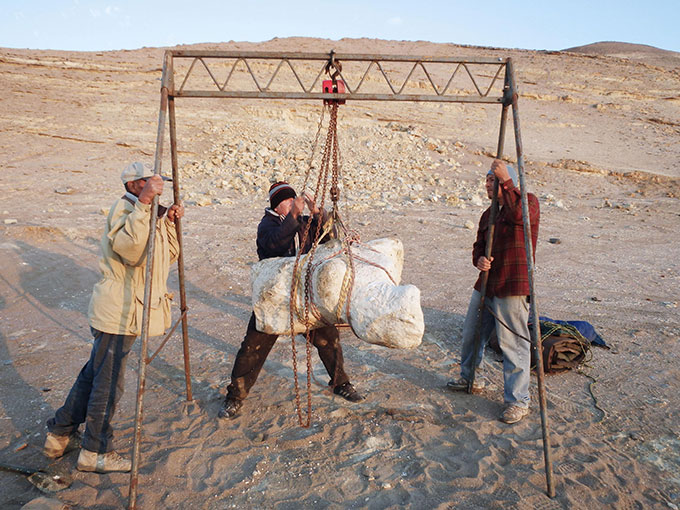Move over, blue whales. There could be a new heavyweight champ in town.
Fossilized vertebrae and ribs from a newly discovered ancient whale suggest that it could have outweighed modern blue whales, researchers report August 2 in Nature. If so, the extinct whale would be the heaviest animal ever known to exist.
The roughly 39-million-year-old behemoth, Perucetus colossus, is a type of cetacean, a group that includes modern whales, dolphins and porpoises. And its bones were massive. P. colossus’ skeleton alone could have weighed about 5 to 7 metric tons, two to three times as much as a 25-meter-long blue whale’s skeleton does, the researchers estimate.
The fossils, which were found in southern Peru, were “clearly something exceptional from the first look,” says Eli Amson, a paleontologist at the State Museum of Natural History in Stuttgart, Germany. “You don’t move a vertebra like this by yourself.” Thirteen vertebrae were unearthed in total, each weighing over 100 kilograms, or more than a baby elephant.

Such heavy bones are consistent with a coastal, shallow-diving lifestyle, Amson and colleagues say. For deep dives, whales need a lighter skeleton so they can come back up for air without working too hard. The massive bones of P. colossus could have helped it hover at shallow depths by balancing the upward buoyant force from the air in its lungs.
Overall, P. colossus could have weighed anywhere from 85 to 340 metric tons, the team estimates. That’s at least as much as a typical blue whale, and up to as much as eight passenger jets. But the animal’s true mass is difficult to determine from only fossils and would have also depended on the distribution and density of the creature’s soft tissues.
Some scientists are skeptical that P. colossus could have reached the upper end of that mass range. Without a fossil skull, it’s hard to know what P. colossus could have eaten to sustain such an enormous size, says Nicholas Pyenson, a paleontologist at the Smithsonian National Museum of Natural History in Washington, D.C., who was not involved in the study (SN: 12/12/19).
Amson says he is hopeful that the team will find a more complete specimen of the whale to better understand how it maintained its heavyweight status.


